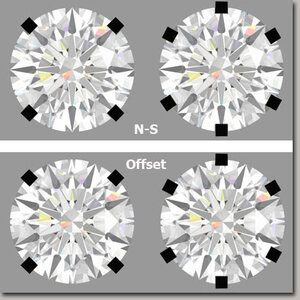- Joined
- Feb 14, 2014
- Messages
- 2,898
Are tension settings safe??..
Kenny, my point was there is a difference between "Might" be an issue and "Is" an issue.
If it was a big issue we would have heard about it over 12-13 years.
Kenny, my point was there is a difference between "Might" be an issue and "Is" an issue.
If it was a big issue we would have heard about it over 12-13 years.
Victor, while the content itself of your OP seems reasonable and mechanically sound, your post may violate one of the PS policies for Trade members ... Do not create fear-based doubts in consumers' minds in order to scare them into using your services.
A civilian posting the same thing would not run afoul of PS policy.
IMO while restrictive PS's trade member policies do keep this place from descending into a Turkish bazar where vendors shout and grab at every shopper who walks past their stall.
BTW, the OP had already been reported to admin so I'm not the only one who noticed this.
Karl,
I think this is an incremental change. Over 12-13 years ring designs have evolved and become more and more delicate. I remember 12+ years ago, ring designs had at least 10-15 grams of metal on them. These days, we’re producing rings that are 4-5g in platinum. Vendors are being asked to produce rings with minimal metal and that they don’t want to see the prongs. So the challenge is to provide that visual while still keeping the rings relatively durable. IMO all of these things combined could cause a diamond to become loose, yes.
Have you checked to make sure you don't have a lifted prong?Is this why my prongs are always picking up fibers from my clothing?
Karl,
I think this is an incremental change. Over 12-13 years ring designs have evolved and become more and more delicate. I remember 12+ years ago, ring designs had at least 10-15 grams of metal on them. These days, we’re producing rings that are 4-5g in platinum. Vendors are being asked to produce rings with minimal metal and that they don’t want to see the prongs. So the challenge is to provide that visual while still keeping the rings relatively durable. IMO all of these things combined could cause a diamond to become loose, yes.
Victor,
Yes, there will be cases where it might make a difference but a designer can take it into account when designing the ring and create a safe ring.
That is the difference between a skilled craftsman and one with lesser skills.
Including communication skills to discuss any potential issues with a client.
I believe I saw 2 configurations for 6 prong settings as well, one showing arrows more clearly (or symmetrically?) than the other. Is there a preference here as well?
Hi Victor,Hi Texasleaguer,
First off I wanted to say that I’m sure your team does a great job setting. Burnishing the prongs is a great touch.
My comment is more geared towards super delicate prongs done on rings these days especially in halos. It would be a bit tough to burnish very thin wire eagle claw prongs but I guess it can be done.
The facet junctions cause the prongs to sit a little higher as opposed to having them on top of the main bezel facet which is where my concern comes from. Having the prongs sit lower would prevent the diamond from rotating and causing the prongs to go into a higher position.
All the best
Hi everyone,
I just wanted to share a suggestion to the community based on past experience and because I’ve had this debate with clients in the past.
Setting a round diamond off center in a four prong arrangement causes the prongs to sit right on top of two facet junctions, namely between two upper girdle facets. This means that the prongs are not on top of a flat surface which is not as secure as having them on top of a flat surface. This might or not become an issue with the prongs over time. Some unknowns such as the thickness of the prongs (even the type of metal) can effect whether this becomes a problem. Please refer to the image below:
My suggestion is to set a round diamond with the arrows facing the NSEW arrangement. Doing this causes the prongs to sit right on top of a single Bezel facet which is nice and flat and more secure.
All the best,

@sugarcloud Did you get this sorted out?
